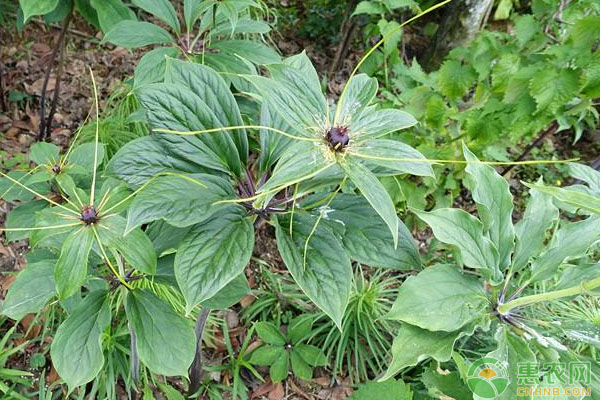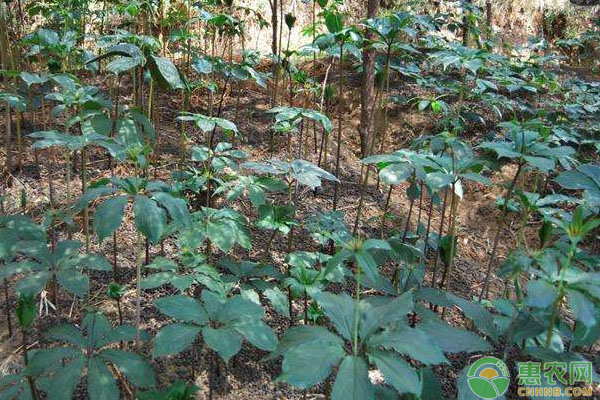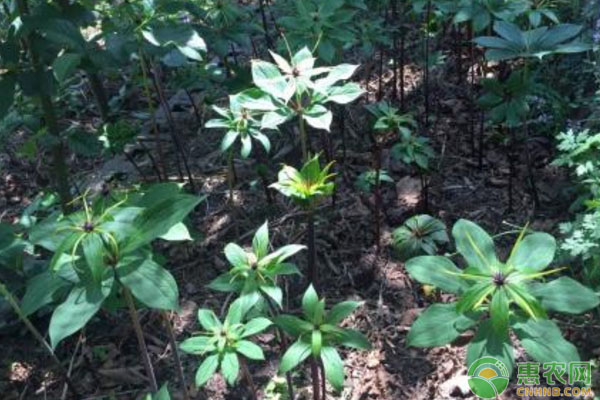There are two kinds of physiological characteristics of heavy building. One is Yunnan Heavy Building, which is mainly produced in Yunnan, Guizhou and Sichuan, and the other is Qiye and Yihua. It is mainly produced in Guangdong, Guangxi, Jiangxi, Fujian, Shaanxi and Sichuan. It mainly treats acne. Swelling, sore throat, snake bites, falling and hurting, convulsions and other diseases, today Xiaobian will simply talk about the medicinal resources of the building, the field management points, I hope to help everyone.

(1) Planting time
Seedlings can be transplanted until the second year of emergence. Generally, it is most suitable from October to November, because the roots of the heavy building during this period are less damaged, and the organs such as flowers and leaves are not yet developed. Will emerge, it is necessary to pay attention to the emergence of seedlings in the rainy season to reduce root damage, try to transplant seedlings, reduce transport time, it is best to transplant immediately after the seedlings.
(2) Planting density
The planting density of the upper and lower buildings is generally different according to the seedling size. The seedling density is relatively large, and the seedling density is relatively small. The plant spacing is 10cm X 15cm, 15cm X 15cm or 10cm X 20cm. It is said that 25,000 to 35,000 plants are planted per mu. The planting density of the seven leaves and one flower seedling is most suitable at 10cm X 15cm.

(3) Planting methods
In the groove with a depth of 4-6 cm in the lateral direction of the kneading surface, the seedlings are placed according to the planting specifications, and the top bud tip is placed upward, and the first groove is covered with the soil of the second ditch and so on. Cover the noodles with loose hair or straw after sowing, which can be used to keep warm, moisturize and prevent weeds. After planting, pour enough water, then water the soil according to the soil.
(4) Water and fertilizer management
Watering every 10 to 15 days after planting, after emergence, if conditions permit, sprinkler irrigation can be used to increase air humidity and promote the growth of heavy buildings. Drainage measures should be taken before the rainy season, and water should not be used. Fertilization is generally based on organic fertilizers, supplemented with compound fertilizers and various trace element fertilizers. In the middle of May and the end of August, the organic fertilizer is applied once. The organic fertilizer includes fully decomposed farmyard manure, livestock manure, oil and ash, crop stalks, etc. It is forbidden to apply human excrement and must be fully fertilized when fertilizing. Apply. At the same time, when applying organic fertilizer, nitrogen, phosphorus and potassium fertilizers should be applied according to the growth of the heavy building. The ratio of nitrogen, phosphorus and potassium fertilization in the heavy building is generally 1:0.5: 1.2, and 10 kg, 20 kg and 12 kg of urea, superphosphate and potassium sulfate are applied per mu; fertilization is applied by spraying or watering, after fertilization Pour a water or apply it before it rains. Foliar fertilization promotes plant growth during the vigorous growth period of the heavy building. Spraying 0.5% urea and 0.2% potassium dihydrogen phosphate once every 15 days, a total of 3 sprays are required, and the spraying time should be selected on a sunny day. In the evening.

(5) cultivating and weeding
Because the roots of the heavy building are shallow, it is necessary to be careful when germination of new roots in autumn and winter. In the early stage of the growth of underground stems around September to October, the cultivating depth should not be too deep, so as not to damage the underground stems. When cultivating, it is necessary to apply winter fertilization with soil. Before and after the beginning of spring, weeds should be removed in time. Weeding should be done not to damage seedlings and underground stems, so as not to affect the growth of heavy buildings.
China: In accordance with Article 54 of the Food Hygiene Law of the People's Republic of China, Article 28 of the Hygiene Management Measures for Food Additives, Article 2 of the Hygiene Management Measures for Food Nutrition Enhancers and Article 99 of the Food Safety Law of the People's Republic of China, food additives are defined as: Food additives refer to artificial or natural substances added to food for the purpose of improving quality, color, aroma and taste of food and for the purposes of preservative, fresh-keeping and processing. According to GB 2760-2014 National Food Safety Standard for The Use of Food Additives, food additives are defined as "artificial or natural substances added into food for the purpose of improving food quality, color, aroma and taste, as well as for the needs of anti-corrosion, fresh-keeping and processing technology. Spices for food, base agents in gum-based confectionery and processing AIDS for food industry are also included.
Food Addictives Powder,Tryptamine Powder,Beta-Nicotinamide Mononucleotide Powder,Sucralose Bulk Food Additives
Shaanxi YXchuang Biotechnology Co., Ltd , https://www.peptidenootropics.com